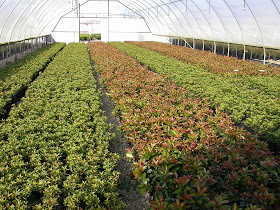WSDA Communications
 For farmers, ranchers and those producing food and drink in Washington, international markets are crucial to maintaining a robust agriculture industry.
For farmers, ranchers and those producing food and drink in Washington, international markets are crucial to maintaining a robust agriculture industry.Washington exports about 30 percent of the food and agricultural products produced here, and the third largest market for our products is China. This is one reason WSDA is closely following developments regarding increased tariffs proposed on some imports from China, followed by the response from China to impose higher tariffs on 128 U.S. products.
Eight Washington agricultural products are on the list China has marked as subject to higher tariffs. Together, those products generated $120 million in revenue in 2017 in exports to China alone. Statistics in both charts below are based on the calendar year and are estimates based on data from World Trade Atlas.
Washington ag products possibly subject to higher tariffs by China
Product
|
2017 value in export to China
|
Sweet Cherries
|
$99.7 million
|
Fresh Apples
|
$17.6 million
|
Wine
|
$1.6 million
|
Fresh Pears
|
$697,000
|
Dried Fruit
|
$544,500
|
Frozen Fruits & Berries
|
$181,700
|
Fresh Cranberries
|
$92,400
|
Fresh Plums
|
$6,700
|
Top 10 exports to China in 2017
Exports
|
Dollar Value
|
Ranking
|
|
1
|
Fish and Seafood
|
$154.5 million
|
#2 market
|
2
|
Hay
|
$103.6 million
|
#3 market
|
3
|
Sweet Cherries
|
$99.7 million
|
#1 market
|
4
|
Frozen French Fries
|
$54.4 million
|
#3 market
|
5
|
White Wheat
|
$45.1 million
|
#5 market
|
6
|
Dairy Products
|
$25 million
|
#5 market
|
7
|
Fresh Apples
|
$17.6 million
|
#10 market
|
8
|
Seeds (fruit, veg, forage)
|
$12.3 million
|
#2 market
|
9
|
Frozen Vegetables
|
$10.5 million
|
#2 market
|
10
|
Fishmeal
|
$10.3 million
|
#1 market
|
With trade being so crucial, WSDA will continue to work with the agriculture industry and our federal partners to make sure that the voice of farmers, ranchers and food producers is heard.
Work also continues on maintaining and developing export markets for our state. Members of the WSDA International Marketing Program are already scheduled to participate in two trade activities involving China - one in May and another in June.






